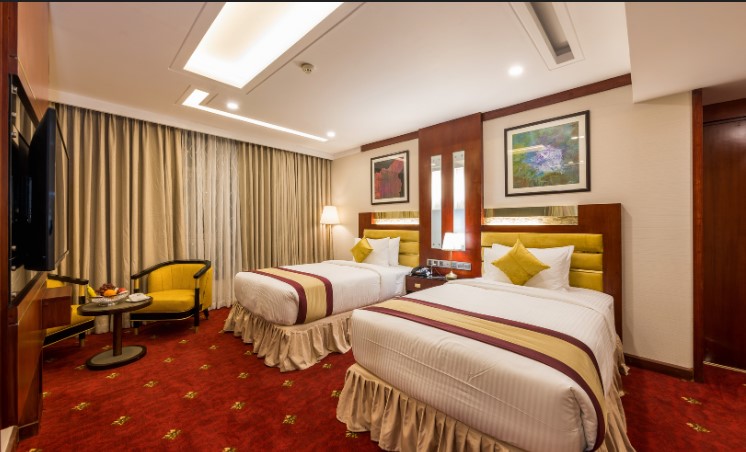This thriving sector not only supports the country’s economy but also provides employment opportunities for millions of people. In this article, we will explore the growth of garments manufacturers in Bangladesh, their strengths, challenges, and why Bangladesh is considered a key player in the global apparel industry.
The Rise of Garments Manufacturing in Bangladesh
The journey of the garments industry in Bangladesh began in the late 1970s. At that time, the country was looking for a way to diversify its economy beyond agriculture. With the help of global trade agreements and an abundant workforce, garment factories started gaining traction.
By the 1990s, Bangladesh had established itself as a strong competitor in the textile and apparel sector. Today, the country is the second-largest exporter of ready-made garments (RMG) after China. According to recent reports, the garment sector contributes more than 80% of Bangladesh’s total export earnings, highlighting its importance to the nation’s economy.
Why Bangladesh is a Global Leader in Garment Manufacturing
1. Skilled Workforce
One of the strongest assets of garments manufacturers in Bangladesh is the availability of skilled and semi-skilled workers. Millions of men and women are employed in the sector, with many trained in cutting, sewing, finishing, and quality control.
2. Competitive Labor Costs
Compared to other garment-producing countries, Bangladesh offers competitive labor costs, making it attractive for international buyers looking to balance quality and affordability.
3. Large-Scale Production Capacity
With thousands of factories, many equipped with modern machinery, Bangladesh can handle large-scale orders for global brands. Whether it’s basic t-shirts, formal wear, or high-fashion items, the country has the capacity to produce garments at scale.
4. Compliance and Sustainability Efforts
Over the years, garments manufacturers in Bangladesh have significantly improved compliance with international safety and labor standards. Many factories are certified by organizations such as WRAP, BSCI, and ISO. Additionally, Bangladesh has made impressive progress in sustainable manufacturing, with many green factories certified by LEED.
5. Strategic Location for Exports
Bangladesh enjoys easy access to major markets in Europe, North America, and Asia. Its favorable trade agreements, such as duty-free access to the EU under the Generalized System of Preferences (GSP), further strengthen its appeal.
Types of Garments Manufacturers in Bangladesh
The industry is diverse, catering to a wide range of international demands. Some common types of garment manufacturers include:
Knitwear Manufacturers – Specializing in t-shirts, polo shirts, leggings, and sweaters.
Woven Garment Manufacturers – Producing shirts, trousers, denim, and formal wear.
Outerwear Manufacturers – Jackets, coats, and sportswear for global brands.
Home Textile Manufacturers – Producing bed linens, towels, and other textile products.
Specialized Garments Manufacturers – Focusing on lingerie, uniforms, and children’s wear.
This diversity makes Bangladesh a one-stop destination for different apparel categories.
Leading Garments Manufacturers in Bangladesh
Over the years, several manufacturers have built strong reputations in the global market. Some well-known names include:
Ha-Meem Group – One of the largest garment manufacturers, specializing in denim, knitwear, and woven items.
Square Fashions Limited – A top exporter known for knitwear and casual apparel.
Beximco Textiles & Apparels – A vertically integrated manufacturer serving global brands.
DBL Group – Known for sustainable practices and supplying major fashion retailers.
Youngone Corporation – Specializes in outdoor and sportswear apparel.
These companies, along with thousands of small and medium-sized factories, have built Bangladesh’s reputation as a trusted source for ready-made garments.
Contribution of Garments Manufacturers to Bangladesh’s Economy
The garment sector is the backbone of Bangladesh’s economy. Here are some key contributions:
Export Earnings – Over 80% of total exports come from garments.
Employment – More than 4 million people work in the garment sector, with women making up the majority.
Women Empowerment – The industry has created opportunities for women to join the workforce, contributing to gender equality and economic development.
Industrial Growth – Garment manufacturing has boosted other industries like textiles, packaging, and logistics.
Clearly, the success of garments manufacturers in Bangladesh is directly linked to the country’s economic growth and social progress.
Challenges Faced by Garments Manufacturers in Bangladesh
While Bangladesh is a global leader, the industry faces some challenges:
Rising Production Costs – Increasing wages and utility expenses affect competitiveness.
Compliance and Safety – Although improvements have been made, continuous monitoring is necessary to maintain international standards.
Global Competition – Countries like Vietnam, India, and Cambodia are also strong competitors in garment exports.
Dependency on Imported Raw Materials – Despite having a strong textile base, Bangladesh still relies on imports for certain fabrics and accessories.
Supply Chain Disruptions – Events like the COVID-19 pandemic highlighted vulnerabilities in global supply chains.
Addressing these challenges is crucial for maintaining Bangladesh’s stronghold in the global apparel industry.
The Future of Garments Manufacturers in Bangladesh
The outlook for the industry remains positive. With growing demand for affordable yet quality apparel worldwide, Bangladesh is expected to remain a key player. Here are some future trends:
Sustainability – Manufacturers are adopting eco-friendly production processes, renewable energy, and water-saving technologies.
Digital Transformation – Smart factories with automation, AI-driven quality checks, and digital supply chain management will improve efficiency.
Value-Added Products – Moving beyond basic garments to produce high-value fashion items and technical apparel.
Expansion of Green Factories – Bangladesh is already home to the highest number of LEED-certified green garment factories in the world, a trend expected to grow.
With these advancements, garments manufacturers in Bangladesh will not only retain but also strengthen their position in the global apparel market.
Why International Buyers Choose Garments Manufacturers in Bangladesh
Global fashion brands such as H&M, Zara, GAP, and Walmart rely heavily on Bangladesh for their apparel sourcing. Some reasons include:
Quality Assurance – Factories maintain strict quality control measures.
Timely Delivery – Manufacturers are known for meeting strict deadlines.
Customization – Ability to handle tailored designs and brand-specific requirements.
Large Workforce – Ensures bulk orders are managed efficiently.
This combination of factors explains why garments manufacturers in Bangladesh remain the top choice for international buyers.
Conclusion
The story of garments manufacturers in Bangladesh is one of resilience, growth, and global impact. From humble beginnings to becoming a powerhouse in the apparel industry, Bangladesh has proven its strength in producing high-quality, affordable garments for markets worldwide.
Despite facing challenges, the industry’s focus on compliance, sustainability, and innovation ensures a bright future. As one of the largest contributors to the country’s economy and a leading force in the global apparel supply chain, Bangladesh continues to be the go-to destination for garment manufacturing.



